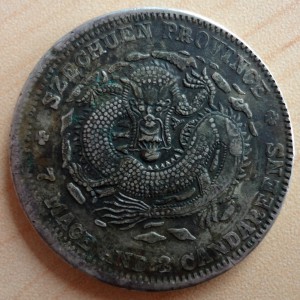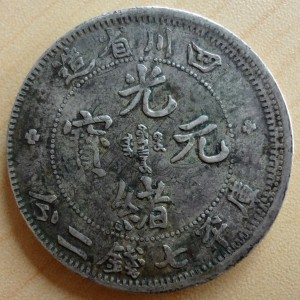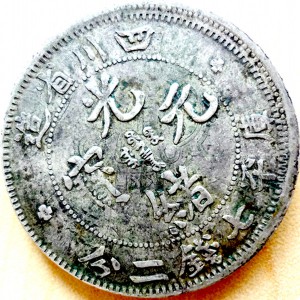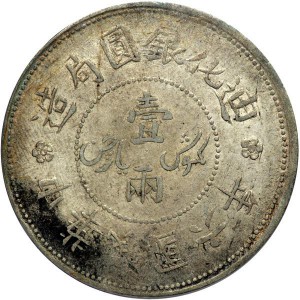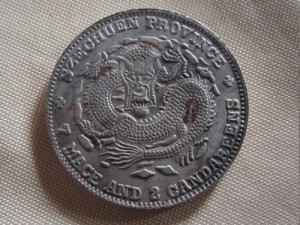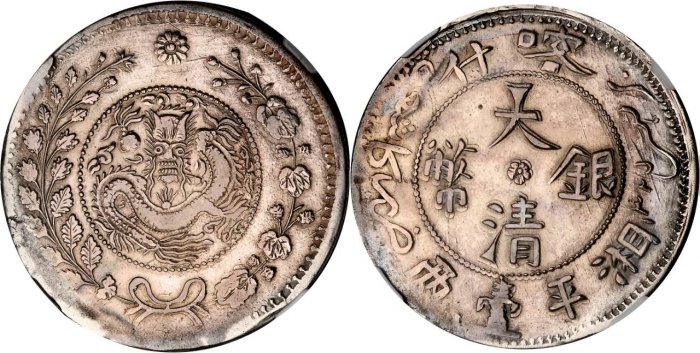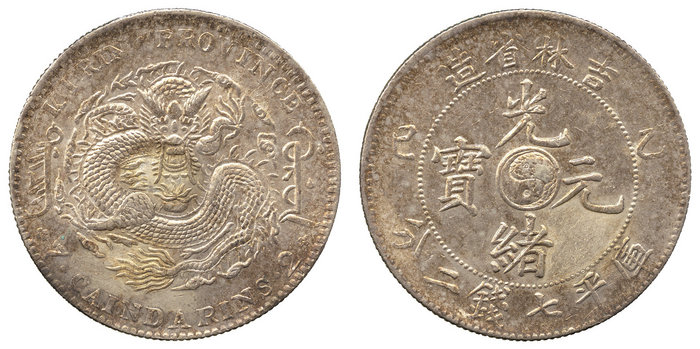Last month I wrote that chinese coins collectors ought to be especially careful in hunting fantasy dollars. Counterfeiters are well aware of the growing interest in these very special coins and have been increasingly daring and creative to profit from this trend.
This month I would like to show you a very interesting sample: a Szechuan dollar struck over a Sinkiang tael.
This unusual Chinese coin has been cleverly crafted to deceive advanced collectors. The design of this Szechuan dollar could reasonably be attributed to some unofficial or private mint, and details of the host coin are immediately noticeable underneath, particularly on the reverse.
This intriguing coin is obviously tempting for the warlord dollars collector. It is however a cheap forgery. The weight of this coin (35 grams) is consistent with its face value of one Xiāng Píng Tael (湘平壹两), and the worn out surfaces effectively conceal the abnormally soft details of the host coin. The shallow strike on the rims is still visible though and should immediately arouse suspicion. More generally, a 1917 coin of an higher denomination overstruck with a demonetized, lower face value coin type should also raise a few eyebrows.
The main problem with this coin though is that this particular Sichuan dollar design is a well-known fake Chinese coin type. From that point on, it is easy to guess that some enterprising counterfeiter decided that striking fake Xinjiang taels with an odd-looking Szechuan dollar would make them more interesting and less obvious to spot.
